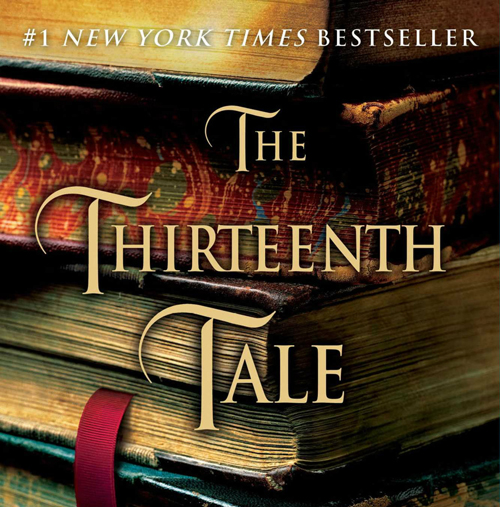My biggest reading surprise in recent years came in the form of Diane Setterfield’s gothic masterpiece, The Thirteenth Tale. Though published in 2008 to great acclaim, I somehow missed this book until my family took a 1,500 mile road trip in 2011. I packed five novels in the hope that one of them would be good. I never made it past the first. And I’m not entirely sure if I spoke to my husband at all during that trip. I was consumed.
In her novel Diane Setterfield introduces us to Vida Winter, a prolific, reclusive author who chooses to finally tell her life story to a young biographer by the name of Margaret Lea. Unfortunately, Vida has given a different version of her story to every writer she’s ever spoken to. Interviewing her has become a rite of passage for young journalists, an errand failed before it’s begun. Margaret does not trust her, but she is fascinated by her. And for good reason. Vida Winter is one of the most memorable literary characters, and certainly the strongest female character I have ever read. She is terrifying in the way that only the fiercely intelligent can be. Unforgiving. Perceptive. Relentless. Yet she also possesses a tender form of insight that gives her an immediate humanity. Not likeable. No, Vida Winter could never be likeable. But she is immensely compelling. And she has finally met her match in the young, quiet, shrewd Margaret Lea. A lover of books and stories and writers, Margaret is the only person that Vida has ever invited into her world, and the only person capable of ferreting out the dark, twisted truth of Vida’s past. Although, as Vida says early on, “A good story is always more dazzling than a broken piece of truth.” Lucky for us, The Thirteenth Tale is both.
Vida is a writer’s writer. And Margaret exudes what it truly means to be a reader as she picks through the bones of Vida’s narrative searching for the hidden but still-beating heart. These two women understand each other. And they speak the language of books in a way that the rest of us immediately recognize. One morning, early in what is to become a great friendship, Vida tells Margaret what it’s like to write the novels for which she has become so famous. But really she is simply voicing the thoughts every reader has had at some point:
“I have eavesdropped with impunity on the lives of people who do not exist. I have peeped shamelessly into hearts and bathroom closets. I have leaned over shoulders to follow the movements of quills as they write love letters, wills and confessions. I have watched as lovers love, murderers murder and children play their make-believe. Prisons and brothels have opened their doors to me; galleons and camel trains have transported me across sea and sand; centuries and continents have fallen away at my bidding. I have spied upon the misdeeds of the mighty and witnessed the nobility of the meek. I have bent so low over sleepers in their beds that they might have felt my breath on their faces. I have seen their dreams.”
This is what we do as Vida tells her story. We bend low and soak it all in. The Thirteenth Tale is everything I love in a novel: dark, unsettling, mysterious, captivating. And in it Diane Setterfield has mastered the art of restraint. No word, no scene, no character is wasted. Nothing is extraneous or out of place. And as the story unfolds, and we learn the truth of who Vida Winter really is, we are left startled. Amazed. And in awe of this author who can tell a story within a story, all the while blurring the lines between reader and character, between writer and participant. Diane Setterfield has given us a story for the ages.
“I read old novels,” Vida says toward the end. “The reason is simple: I prefer proper endings. Marriages and deaths, noble sacrifices and miraculous restorations, tragic separations and unhoped-for reunions, great falls and dreams fulfilled; these, in my view, constitute an ending worth the wait. They should come after adventures, perils, dangers and dilemmas, and wind everything up nice and neatly. Endings like this are to be found more commonly in old novels than new ones, so I read old novels.”
Though published not so long ago, Diane Setterfield has written an old novel. The proper sort. The kind that stays in libraries and on bookshelves for generations.


Wow. I have owned this book for years, but I really need to move it up in the queue! Great review. I love your thoughts about it as well as the suspense you actually build, making me want to read it sooner rather than later! 🙂
I haven’t read The Thirteenth Tale yet but you have convinced me I need to!